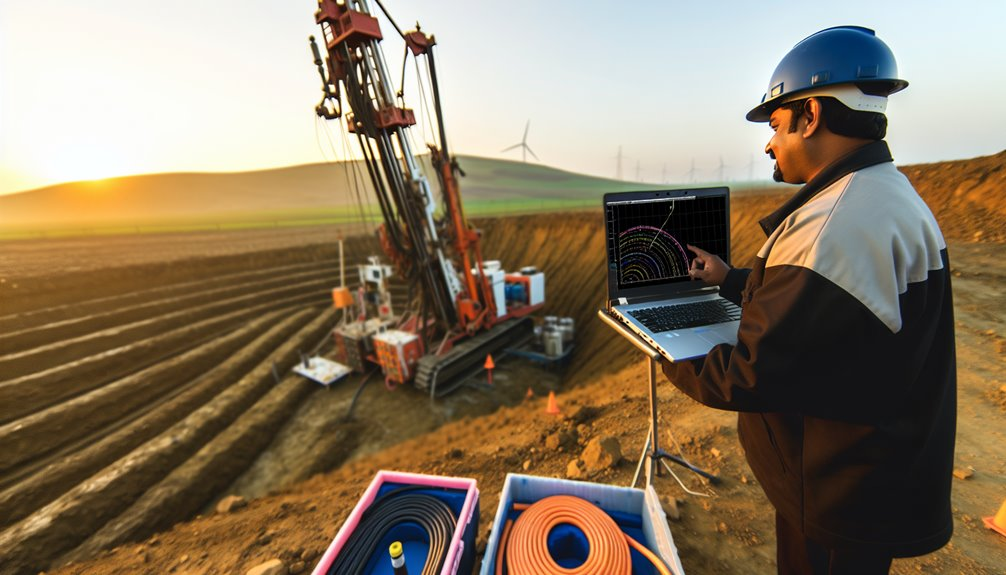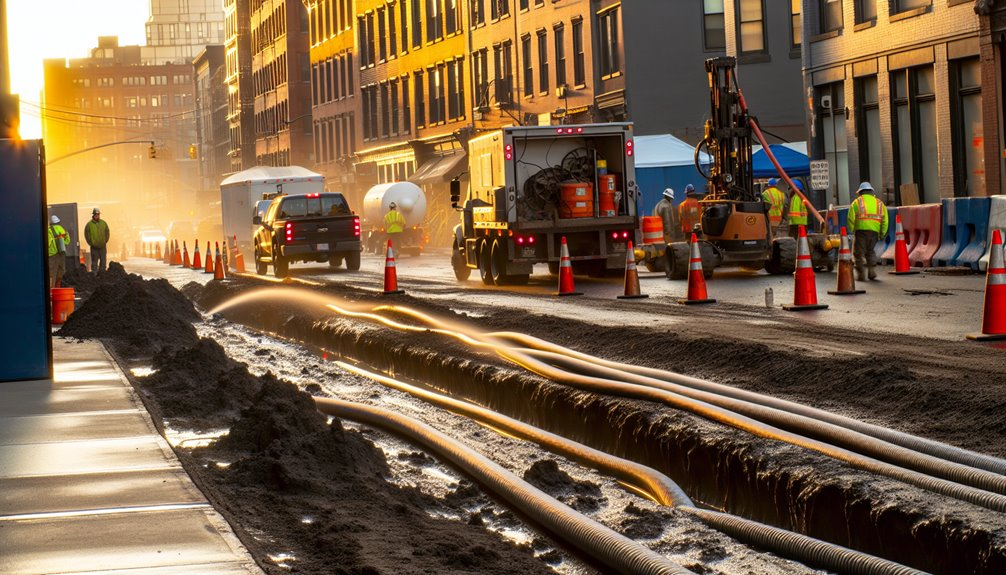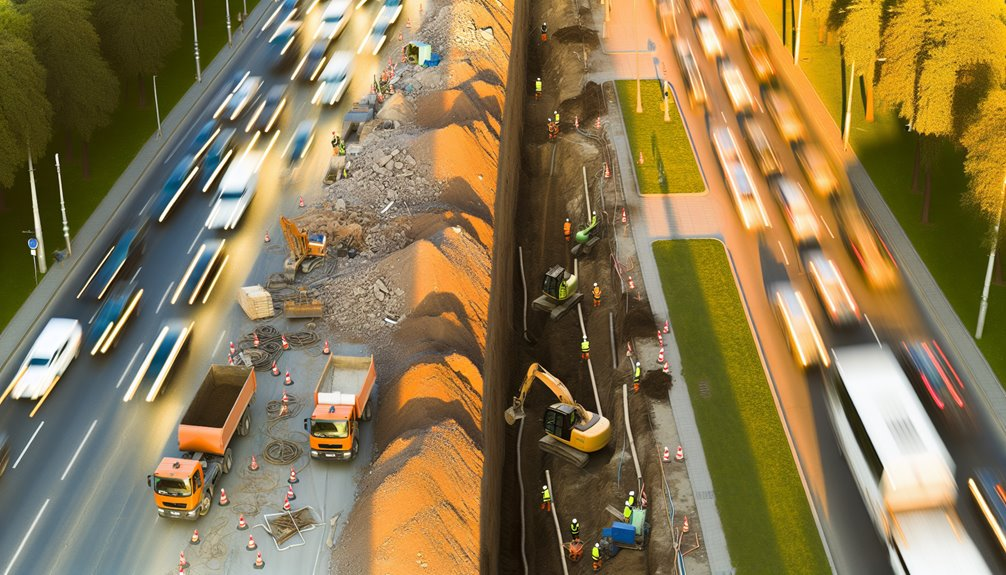As you explore the feasibility of engaging with missile boring technology, it's essential to first understand the specific geological conditions of your project site. Soil composition, rock strength, and underground water levels can greatly influence both the cost and success rate of your tunneling endeavors. By integrating AI-driven analyses, you can more accurately predict these factors, optimizing your approach and potentially reducing unforeseen complications. Let's examine how these elements interplay to affect the strategic planning and execution of your project.
Understanding Missile Boring Technology
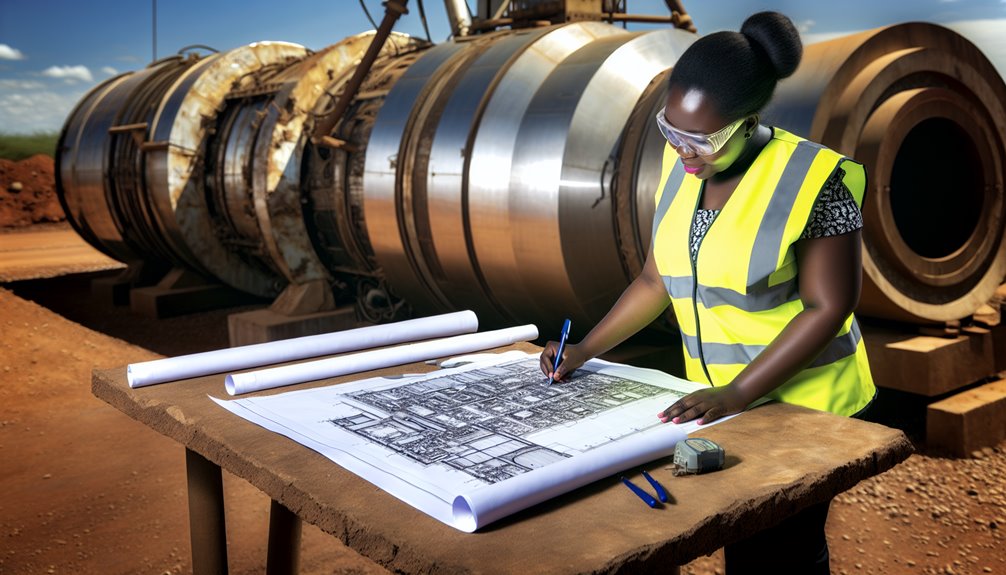
While missile boring technology may sound complex, its fundamental process is straightforward and efficient. You start with an entry pit, strategically positioning the missile based on precise missile selection to guarantee bore accuracy.
Powered by a large air compressor, the missile's percussive action initiates the bore. Progress pits allow for re-aiming—critical for maintaining direction and accuracy over longer distances or when maneuvering around underground obstacles.
This technology is particularly advantageous due to its minimal surface disruption and versatility in various soil conditions. It's ideal for the installation of utilities like gas, electrical lines, and irrigation systems under challenging environments, assuring quick, cost-effective installations with reduced need for extensive surface restoration post-completion.
Missile boring is not steerable and works best in dry soils, making it suitable for projects that do not require complex directional changes.
Geological Considerations for Missile Boring
You must consider how soil composition impacts missile boring operations, as varying soil types can markedly affect the efficiency of tunnel boring machines (TBMs). Rock type variability also plays an important role; different rocks, from sandstone to hard granite, necessitate specific adaptations in TBM design and operation. These geological factors dictate the technical choices and strategies you'll need to employ to guarantee successful and cost-effective boring projects. Additionally, the selection of a drilling machine is crucial and depends on soil conditions, pipe size, and available space, ensuring optimal operation and safety standards.
Soil Composition Impact
Understanding the impact of soil composition is critical when planning missile boring projects, as the geological environment dictates the selection of appropriate boring technologies and techniques.
Here's what you need to take into account:
- Soil Shear and Cohesion: High cohesion, especially in clay soils, increases resistance against boring. You'll face challenges in breaking the soil into a manageable slurry, crucial for efficient removal.
- Moisture Content: Clay's ability to absorb and retain water affects its swelling properties, which can constrict boreholes and bind drilling equipment.
- Soil Permeability Adjustments: Enhancing permeability through techniques like steam injection or deep soil mixing is necessary for effective boring and soil treatment.
- Technical Adaptability: Confirm your boring equipment is versatile enough to handle varying soil conditions, particularly the differences in cohesion and moisture levels.
Rock Type Variability
Rock type variability greatly influences the design and efficiency of Tunnel Boring Machines (TBMs) used in missile boring projects.
You'll find that TBMs must be adaptable to a variety of rock types, such as sandstone. Optimum cutter pressures vary considerably among different cutter-rock interfaces to guarantee efficient penetration, impacting overall excavation efficiency.
Machine design considerations must include the unique interactions at the rock-machine interface, which differ across rock types. Utilizing advanced rock classification techniques, such as petrographic analysis of hand samples, is essential to accurately determine these variations.
Additionally, geological factors like rock-joint patterns, faults, and folds have a profound impact on TBM design and must be meticulously evaluated to optimize performance.
Cost Analysis of Missile Boring Projects
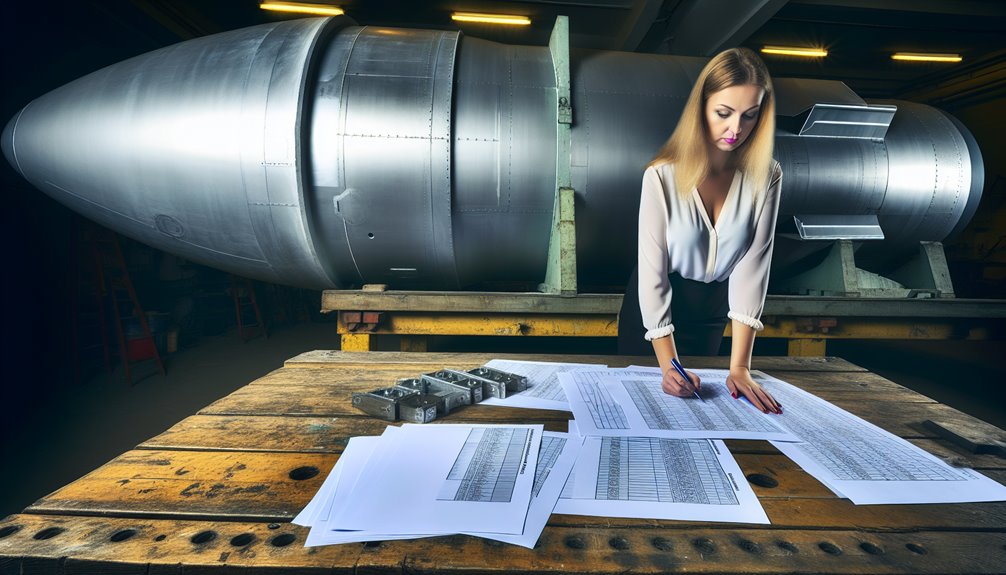
Analyzing the costs of missile boring projects reveals that multiple factors greatly influence financial outputs. You'll find that cost estimation and labor efficiency are pivotal here.
Let's break down these complexities:
- Project Size and Scope: Larger scales and deeper bores mean higher costs due to increased material and labor demands.
- Equipment and Materials: Specialized machinery and high-quality materials considerably drive up expenses. Ongoing costs for drilling fluids and other consumables must also be considered.
- Labor Costs: Skilled labor isn't cheap. The expertise required for missile boring demands premium wages, impacting overall financial planning.
- Cost Sensitivity Analysis: Identifying and narrowing down key cost-driving factors can enhance budget accuracy and project feasibility.
This detailed approach guarantees you're equipped for innovative and efficient project execution.
Environmental Impact and Regulatory Compliance
While traversing the complexities of missile boring projects, it's vital to contemplate their environmental impact and guarantee stringent regulatory compliance.
You'll engage in thorough environmental assessments, starting with site characterization to discern geological and hydrological specifics, including contamination pathways. Evaluating alternative remedial measures is significant, not just for their economic and technological viability but also for their environmental soundness and implementability.
Simultaneously, steering through the regulatory frameworks involves more than adherence to federal and state laws. You must ascertain continuous training in safety compliance, maintain all necessary drilling and boring licenses, and enforce controlled access policies rigorously.
This dual focus on extensive environmental assessment and unwavering regulatory compliance positions your project for both ecological sustainability and legal integrity.
Project Planning and Risk Management

In your project planning, you'll need to identify key risks such as soil instability, equipment failure, and potential safety hazards.
Your mitigation strategies should include thorough equipment checks, rigorous training for all personnel, and strict adherence to safety protocols.
Effective risk management guarantees the missile boring operation is safe, efficient, and compliant with all regulatory requirements.
Identifying Key Risks
Before starting any missile boring project, it's crucial to identify the key risks associated with project planning and risk management.
- Technical Risks: Regular maintenance and accurate drilling, aligned with soil conditions and underground utility surveys, are critical to mitigate equipment and drill malfunctions.
- Environmental and Safety Risks: Managing underground hazards, strict adherence to PPE, and thorough safety measures like worksite safety barriers and drug policy compliance are essential.
- Operational and Logistical Risks: Weather conditions, operational precision, and resource availability directly impact project success. Continuous operator training and detailed work plans are prerequisites.
- Regulatory and Compliance Risks: Compliance with OSHA, state, and federal regulations, along with rigorous training and insurance coverage, guarantees legal and safety standards are met.
Mitigation Strategy Development
To effectively manage the various risks associated with missile boring projects, you must develop and implement a thorough mitigation strategy as part of your project planning and risk management efforts.
Begin with proactive measures such as risk-based mitigation to minimize costs and schedule delays. Engage deeply in supply chain management, securing lifecycle quantities early and forming robust partnerships with suppliers.
Utilize technology roadmaps and design for obsolescence to anticipate future needs.
On the reactive side, prepare for redesigns and upgrades, utilizing brokerage services cautiously to mitigate the risks of counterfeit parts.
Technological Advances in Missile Boring
As the field of missile boring continues to evolve, cutting-edge technologies and artificial intelligence integration are greatly enhancing the capabilities and efficiency of Tunnel Boring Machines (TBMs).
Here's how you're directly benefiting from these advancements:
- AI Integration: AI systems optimize tunneling strategies by analyzing real-time data on geological conditions, reducing machine downtime and adapting operations to minimize structural deformations.
- Machine Learning: TBMs equipped with machine learning algorithms continuously improve their operational efficiency, learning from each segment of tunnel excavated to enhance future performance.
- Enhanced Data Acquisition: Advanced sensors and data processing capabilities allow for precise monitoring of cutter wear, supporting timely maintenance and reducing unexpected delays.
- Rapid Tunneling Development: Technologies focus on accelerating tunnel construction while maintaining structural integrity, greatly cutting down project timelines.
Case Studies: Successful Missile Boring Applications
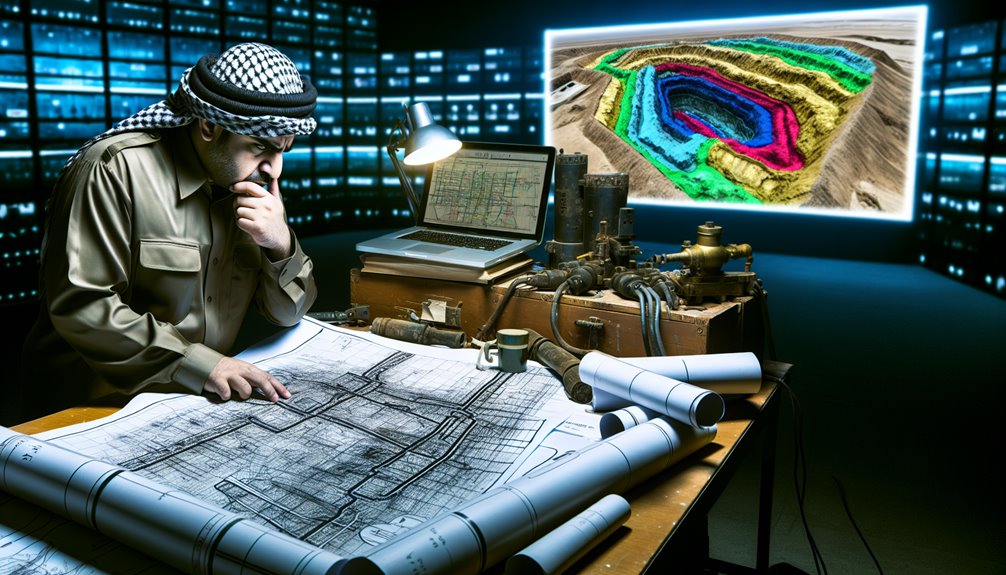
Given the remarkable advancements in missile boring technology, a variety of successful applications have emerged, showcasing significant benefits across diverse sectors.
In Raleigh, NC, high-production stitch boring methods accelerated the installation of residential fiber optic cables, demonstrating how these techniques adapt to various ground conditions like petrified and sticky clay. This method not only maintained the aesthetic integrity of residential areas but also enhanced operational efficiency, allowing crews to swiftly shift between sites.
Similarly, in South Florida, missile boring proved instrumental for multi-utility installations, including water and gas lines, minimizing surface disruption and reducing project costs.
These case studies exemplify the strategic advantages of missile boring, underscoring its potential to transform traditional utility installation approaches and optimize project outcomes.
Conclusion
As you venture into missile boring projects, it's essential to integrate advanced AI and geological assessments to enhance precision and efficiency. Remember, accurate cost forecasting and rigorous environmental compliance are indispensable. Leveraging cutting-edge technologies not only streamlines operations but also minimizes environmental disruption, ensuring your project aligns with regulatory standards. Embrace these practices to mitigate risks and capitalize on the evolving capabilities of missile boring technology, positioning your projects for success.
If you're looking to dive deeper into the world of missile boring, I invite you to visit Boring Bros at boringbro.com. Our team is here to help you every step of the way! Feel free to reach out by calling us at (954) 639-6167. We'd love to chat and explore how we can support your projects together!


